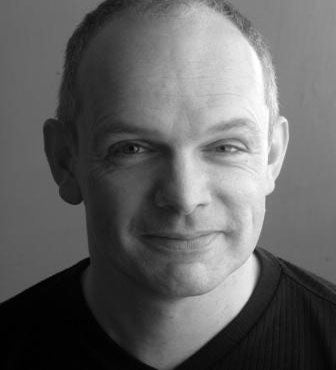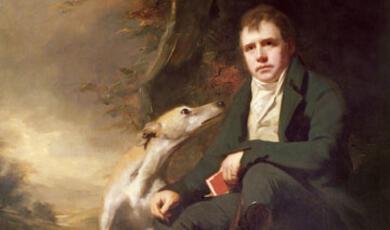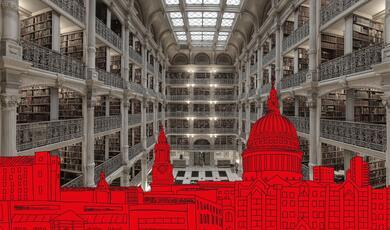"A Stout Heart in the Great Cesspool": Arthur Conan Doyle and London
Share
- Details
- Text
- Audio
- Downloads
- Extra Reading
From the impressions of his first youthful visit, to his mature years when all doors opened for him, London was an important backdrop to much of Conan Doyle's life and work. From the Sherlock Holmes stories to The Lost World (in this, the 100th anniversary year of Professor Challenger's first great adventure) this lecture examines some of the locations which influenced him. It will also touch on some of his lesser known works and include the place which perhaps meant more to him than any other in London, and to which he returned in his writing throughout his life.
Download Text
2 July 2012
Arthur Conan Doyle and London
Richard Burnip
An Introduction by Professor Tim Connell
London at the start of the Nineteenth Century was a city of superlatives. The largest population, the biggest port, the biggest concentration of industry. It had expanded rapidly in three quarters of a century from a population of one million to an unheard-of three million, forty per cent of whom had not been born in London.i
George Cruikshank’s celebrated picture of 1826 shows Islington growing out into the open country of Hampstead, creating comfortable suburbs for a growing middle class, but leaving in the centre a maelstrom of the indigent poor and downright criminal, in overcrowded and insanitary conditions.ii Oyster Day was one of the older traditions that still survived, though oysters were, of course, a standard food for the very poor.
Charles Booth's study was published in 1889 under the title 'Life and Labour of the People in London' and eventually ran to nine volumes. This map was included in the published work. Using a colour code, the map represents varying levels of poverty in different districts across London: for example, Dark blue stands for 'Very poor. Casual, chronic want', while Black stands for 'Lowest class. Vicious, semi criminal.'iii
Booth's study took into account a wide variety of subjects: working conditions, education, wage levels, workhouses, religion, and police, to name a few. As part of his research Booth lived with working-class families for several weeks at a time. He wrote of the many happy children he met who were, he wrote, free from the swarms of servants, nurses and governesses that overshadowed the lives of wealthier children. However, he recognised that for poor families disease, hunger and even death were an ever-present danger, and that many lived in a constant state of fear.
The precursor to Booth was Henry Mayhew whose London Labour and The London Poor was published in 1851. It consists of hundreds of interviews with street dwellers, and is almost a work of literature in itself. Initially, it seems to be rather judgemental, looking at the three categories: “they will work, they can't work, and they won't work”. But, as he explains in his preface,
“My earnest hope is that the book may serve to give the rich a more intimate knowledge of the sufferings, and the frequent heroism under those sufferings, of the poor – that it may teach those who are beyond temptation to look with charity on the frailties of their less fortunate brethren – and cause those who are in “high places” and those of whom much is expected, to bestir themselves to improve the condition of a class of people whose misery, ignorance and vice, amidst all the immense wealth and great knowledge of “the first city of the world”, is, to say the least, a national disgrace to us.”iv
A further testimony of the impact of excessive growth comes from Gustave Doré and Blanchard Jerrold, whose London – a Pilgrimage of 1872 contains no fewer than 180 outstanding illustrations, though they were criticised at the time for concentrating on poverty rather than the wealthier or more picturesque elements of London.v
So Victorian London was viewed with some trepidation at the time. Apart from the fog (which Charles Dickens referred to as a “London Particklar”), there were the crowded night shelters and gin palaces, the alleyways of Jack the Ripper, and the opium dens beloved of Sherlock Holmes.
i Doré’s London, Arcturus Publishing Ltd. 2008, page 9.
ii http://www.spartacus.schoolnet.co.uk/PRcruikshank.htm See also George Cruikshank & Richard Vogler (1979) The graphic works of George Cruikshank, Dover.
iiihttp://www.bl.uk/learning/artimages/maphist/wealth/boothextract/boothslondonpovertymap.html
Today, Richard Burnip will tell us more about Conan Doyle and what he refers to in A Study in Scarlet as “The Great Cesspool”.
Richard Burnip trained at Birmingham School of Speech and Drama and has appeared with many theatre companies in Britain, Germany and the Middle East.
His television work includes Inventions That Changed the World (BBC), A Most Desperate Undertaking (History Channel) and Royal Deaths and Diseases (Channel 4).
His audio work ranges from computer games and synthetic speech to recordings for historic sites in Old and Middle English. His numerous audiobooks cover many genres from children¹s stories and detective fiction to major political texts.
Afterword
Don’t let’s forget that Conan Doyle could also have a pretty jaundiced view of crime in the countryside too:
"Good heavens!" I cried. "Who would associate crime with these dear old homesteads?" "They always fill me with a certain horror. It is my belief, Watson, founded upon my experience, that the lowest and vilest alleys in London do not present a more dreadful record of sin than does the smiling and beautiful countryside." "You horrify me!" "But the reason is very obvious. The pressure of public opinion can do in the town what the law cannot accomplish. There is no lane so vile that the scream of a tortured child, or the thud of a drunkard's blow, does not beget sympathy and indignation among the neighbours, and then the whole machinery of justice is ever so close that a word of complaint can set it going, and there is but a step between the crime and the dock. But look at these lonely houses, each in its own fields, filled for the most part with poor ignorant folk who know little of the law. Think of the deeds of hellish cruelty, the hidden wickedness which may go on, year in, year out, in such places, and none the wiser."vi
An even more cynical view of London comes in City of Dreadful Night, written by the Scottish poet James Thomson in 1874 (and not to be confused with the other Scottish poet of the same name, who lived in the Eighteenth Century and was a friend of Dr Johnson):
Although lamps burn along the silent streets; Even when moonlight silvers empty squares The dark holds countless lanes and close retreats; But when the night its sphereless mantle wears The open spaces yawn with gloom abysmal, The sombre mansions loom immense and dismal, The lanes are black as subterranean lairs.
And soon the eye a strange new vision learns: The night remains for it as dark and dense, Yet clearly in this darkness it discerns As in the daylight with its natural sense; Perceives a shade in shadow not obscurely, Pursues a stir of black in blackness surely, Sees spectres also in the gloom intense.vii
iv Henry Mayhew (2008) London Labour and the London Poor. Wordsworth Classics. See also the editions by Peter Quennell, Mayhew’s Characters and London’s Underworld.
v See Note 1.
vi The Adventures of Sherlock Holmes (1892) in "The Copper Beeches" (Doubleday)
(Set in Hampshire)
vii See http://www.gutenberg.org/ebooks/1238 . City of Dreadful Night was used as a short story title by both Rudyard Kipling and O Henry.
2 July 2012
Arthur Conan Doyle and London
Richard Burnip
Much has been written about Conan Doyle, and rather more about his most famous creation Sherlock Holmes. Many people’s impressions of Victorian London are conditioned by the Holmes stories: a city of gas-light and hansom cabs. But Doyle used London in many ways, and often much more deliberately in his other fiction than in the Holmes stories. In this lecture I will consider a few themes and influences across the breadth of Doyle’s life and works, examining in particular several key time periods and some areas of London which I believe meant a great deal to him.
LONDON AS A DISTANT CONNECTION: FAMILY BACKGROUND
Conan Doyle’s grandfather, the artist John Doyle, moved from Dublin to London in the 1820s. Many of his original drawings were published by Maclean, in the Haymarket. In 1832 his youngest son Charles Altamont Doyle was born. In 1849, possibly under family pressure to get him away from the distracting atmosphere of London, Charles moved to Edinburgh where he was employed in the Scottish Office of Works. Aged 17, he was thus exiled from the city of his birth and from his family, and is quoted in various sources as suffering from homesickness and cherishing the wish to return to London. In 1855 he married Mary Foley, and Arthur Ignatius Conan Doyle was their first son, born in 1859. Doyle grew up with a strong sense of his heritage and his illustrious and talented family, but was isolated from the London branch, and perhaps this is one reason London serves as a place that both attracts and repels in Doyle’s own work. Sherlock Holmes would famously speak of the dreadful crimes committed in ‘the smiling and beautiful countryside’, yet the vast majority of the early Holmes stories are based in London and its suburbs; and although Holmes loves to be in London when he is working, he retires to the south coast to keep bees. Doyle’s scientist-explorer Professor Challenger has a couple of London addresses, yet when he believes the human race is about to perish in The Poison Belt he would rather be at his country home.
Conan Doyle was 15 years old when he was invited to stay with his London relatives in December 1874 (he had aunts and uncles in both Maida Vale and the Earl’s Court area). A fairly detailed picture of his visit has been built up by Doyle’s various biographers. He did ‘the sights’ more or less, as anyone will probably do on their first visit to a famous city. With hindsight, a significant visit was made to Madame Tussaud’s waxworks, then in the Baker Street Bazaar, where Doyle was delighted to see the room of Horrors, and the figures of the murderers. It was not only appropriate that he would later choose Baker Street as a focal point for crime, but also appropriate that Sherlock Holmes should set up his own wax effigy, created by a Frenchman, as a decoy there in The Empty House. I like to think Doyle was recreating a memory of that childhood visit.
Among various theatre trips that Christmas, Doyle saw Henry Irving in Hamlet at the Lyceum. He greatly admired the actor, and the influence of Irving would last for many years. Sherlock Holmes is described, both in A Study in Scarlet and in Doyle’s autobiography Memories and Adventures, as lean, hawk-like and beady eyed, images much closer to the young Henry Irving than the more handsome figure generally presented of Holmes. The Lyceum is also remembered when Holmes, Watson, and Mary Morstan arrive there for a rendezvous at the ‘third pillar from the left’ in The Sign of Four.
Doyle later wrote that the first visit he made in London was to Westminster Abbey, not to look at the royal tombs but to stand at the grave of the great historian Macaulay. Doyle would record his debt to Macaulay many times, and it is worth jumping ahead at this point to one of Doyle’s less-known works, the 1899 novel A Duet with an Occasional Chorus. This describes the wedding preparations and early married life of a young couple, Frank and Maude, who visit the Abbey and discuss Macaulay at his memorial. Elsewhere Frank’s reading is suspiciously similar to that of Doyle’s: Carlyle, Borrow, Holmes (Oliver Wendell, that is), Gibbon and Pepys. It is the latter whose footsteps they follow in another chapter, visiting the memorials to Pepys and his wife in St Olave, Hart Street. Later still, in 1903, when Doyle had a room in Buckingham Street, Charing Cross, a convenient pied-a-terre for work, it must have pleased him to think that Pepys had once lived across the road.
The young couple of A Duet also visit Carlyle’s house where they reflect on the possibilities of survival after death. Seventeen years before publicly announcing his conversion to Spiritualism, Doyle was contemplating aspects of it in this most personal but least commercial of his books.
1878 SECOND VISIT TO LONDON
To return to young Doyle’s experiences, in the spring of 1878, by now a medical student in Edinburgh, he visited his London relatives again. The contrast between their lives and his immediate family’s difficult circumstances must by now have seemed acute (Charles Doyle had been pensioned off and would soon be institutionalised with alcoholism and epilepsy). Doyle stayed for about a month in May and June 1878. On his 19th birthday he went to see Irving again at the Lyceum in Louis XI, another great performance. Perhaps Doyle also went to the Opera Comique to see The Sorcerer or Trial by Jury. Years later, in the wake of Gilbert and Sullivan, he was involved in a disastrous attempt to write a new opera for the Savoy, Jane Annie, with J M Barrie. One critic said of their joint effort in 1893: ‘it baffles comprehension how two men so richly and diversely gifted could have created it...’
On May 27th Doyle watched Australia defeat England at Lord’s. One of the umpires was called Rylott: perhaps Doyle recalled the name when he thought of his villain in The Speckled Band. Doyle also saw the violinist Mme Norman-Neruda play at one of Hallé’s recitals – and that famous amateur, Sherlock Holmes, would later admire her skill.
1880s OCCASIONAL VISITS
As an adult, Doyle became estranged from his London relatives when he distanced himself from their staunch Roman Catholicism. In the spring of 1886, now a married doctor in Southsea, he wrote the first Holmes story, A Study in Scarlet, in which Dr Watson, returning from service in Afghanistan, ‘naturally gravitated to London, that great cesspool into which all the loungers and idlers of the Empire are irresistibly drained’. So, Watson is both attracted and repelled by the capital. Doyle himself naturally visited London during this period, in part because he had more dealings with publishers as his literary career developed. On August 30th 1889 he attended a dinner with the commissioning editor of Lippincott’s Magazine at the Langham Hotel, at which he and another guest, Oscar Wilde, both agreed to write a short novel, the results being The Picture of Dorian Gray and the second Holmes adventure The Sign of Four.
At the end of 1890 Doyle decided to give up his Southsea practice and go to Vienna to attend lectures with the purpose of setting himself up as an ophthalmologist. What followed is part of the legend of Doyle and Holmes. The most widely-known version of events is as follows: Doyle and his wife returned to England and Doyle set up as an eye specialist in the neighbourhood of Harley Street. Failing to gain any patients, he filled the time writing for the Strand Magazine, had the brainwave of putting Holmes and Watson into short story format, wrote A Scandal in Bohemia, the Strand asked for more and more stories, Doyle decided to become a full-time author after a near-fatal bout of influenza, and… the rest is history. The truth was probably a little more complex.
1891 DOYLE RESIDES IN CENTRAL LONDON FOR A FEW CRUCIAL WEEKS
Publisher George Newnes launched the first Strand Magazine in December 1890. It was a family magazine designed to have something for everyone, and had two major selling points: the promise of an illustration at every page opening, and the best in modern short stories. Although the first issue is dated January 1891, it was already available by mid-December 1890. As Doyle was always interested in new openings for his work, it seems likely that he bought the new magazine before going to Austria. Early issues of the Strand lacked original stories, relying on translations from European authors, and if Doyle was aware of this he was quick to seize the opportunity. An early contributor was artist Sidney Paget: it is often said he was recruited by accident later that year to illustrate the Holmes stories, but he had already worked for the magazine before Doyle’s first contribution, The Voice of Science, appeared in March 1891.
Doyle’s Viennese sojourn clearly influenced the Austro-Hungarian elements in A Scandal in Bohemia, and numerous attempts have been made over the years to identify the real-life models for the king and his mistress. Readers of the Strand would have needed no help here: the February 1891 issue featured that greatest of royal mistresses, Lillie Langtry.
The Doyles left Vienna on March 9th and arrived in London on the 24th. They took a flat at 23 Montague Place, behind the British Museum, and Doyle set up his consulting room at 2 Upper Wimpole Street. There are indications that he also spent some time at the Royal Westminster Ophthalmic Hospital which was adjacent to the larger and better-known Charing Cross Hospital. In The Hound of the Baskervilles James Mortimer was once a house-surgeon at Charing Cross, and a real James Mortimer was another early contributor to the Strand. Doyle’s consulting room was ‘in order’ by Monday April 6th, but he had already finished A Scandal in Bohemia and sent it to his literary agent A. P. Watt on Friday 3rd. In quick succession the next 3 stories followed, one a week, a testament to his powers of invention and concentration. But had he really time to write A Scandal on his return to England? It’s been suggested, very reasonably, that Doyle began the story in Vienna, but I like to think he started it on the journey home, and that the story itself tells us when. It begins with Watson, married and not having seen Holmes for some time, paying him a chance visit on ‘the twentieth of March, 1888’. Now, if Watson and Doyle are reacquainting themselves with Holmes after some time apart, where was Doyle on March 20th in 1891? In Paris, where he and Touie stopped for a few days on the 19th. What better place to begin a detective short story, with its memories of Poe’s Chevalier Dupin and the Murders in the Rue Morgue? Poe was ‘the supreme original short story writer of all time’ according to Doyle, and it would be singularly appropriate if Poe’s choice of location inspired the Holmes short stories.
As the Holmes stories contain a number of inconsistencies, it might be argued that no importance can be attached to their dates. It is certainly true that Doyle didn’t worry about that sort of thing unless he was writing his painstakingly researched historical fiction: he was concerned to ‘hold my readers’ and would have been taken aback by the amount of analysis given to what he considered his less important works. But Doyle’s dates are often revealing: in chapter 2 of The Sign of Four it is apparently early July, but by chapter 3 it’s a September evening, which was the month when he was actually writing the book. A similar thing happens in The Red Headed League, where the dates don’t make any sense at all, but I suggest they reflect both Doyle’s speed of composition and what he had in mind at the time. So, a newspaper advert of April 27th, 1890 was ‘Just two months ago’ according to Watson, indicating a date for the story of late June. But later in the story we learn it is a Saturday in October 1890. Doyle was writing the story in April 1891, and as he probably wrote the passages with different dates on different days, why did October occur to him? The giveaway seems to be Holmes and Watson’s attendance at a concert by the violinist Pablo Sarasate, later that Saturday afternoon, at St James’s Hall. Sarasate usually gave several concerts a year at the Piccadilly venue, and one of these was on the afternoon of Saturday October 18th 1890. It is tempting to think Doyle was at this concert himself. Small wonder the Holmes stories gripped their early readers, when many of them could imagine attending the same concerts as their hero.
Sometimes Conan Doyle did use dates deliberately. The most obvious is in the Professor Challenger story When the World Screamed when Ted Malone and Peerless Jones visit the excavation on May 22nd, which was Doyle’s birthday. More subtle seems to be the implication of the 1910 Holmes story The Devil’s Foot, in which the case begins on March 16th 1897: not a date of obvious significance, but March 15th 1897 was the date on which Doyle said he first met Jean Leckie, who became his second wife. In The Devil’s Foot Holmes has been ordered to take a rest cure to avoid ‘a complete breakdown’ due to ‘constant hard work of a most exacting kind, aggravated, perhaps, by occasional indiscretions of his own’. ‘Indiscretions’ seems an odd word to use as an oblique reference to Holmes’s drug habit, but if we think of the passage as a reflection of Doyle’s own situation, caring for an invalid wife but falling in love with another woman, we perhaps get a hint of the pressures on the author’s own ‘iron constitution’ at that time.
Doyle’s most dramatic use of real dates seems to me to be in The Final Problem, that now-legendary tale in which Holmes confronts Professor Moriarty. At their meeting in Baker Street on April 24th 1891, Moriarty consults his memorandum book and reminds Holmes of a series of encounters beginning in January. The dates given are close matches for Doyle’s arrival in Vienna, his completion of the short novel he wrote there, his return to London, and his work on the first few Holmes stories for the Strand. Doyle then gives the very specific date of May 4th 1891 for the fatal encounter between Holmes and Moriarty in Switzerland. And May 4th 1891 was the day on which Doyle was struck down with a life-threatening bout of influenza, after which he decided to give up medicine for full-time writing and ‘settled down with a stout heart’ to pursue his literary career. If we see Professor Moriarty not as a villain but as a man of science, representing Doyle’s commitment to medicine, and Holmes as the artistic, literary side of Doyle’s life, their struggle becomes a battle between the two opposing forces of Doyle’s career, as well as a reminder of his own brush with mortality. If this seems to be stretching a point, there’s further evidence for Doyle’s association of May 4th with death: it is the date given in the original Strand version of The Hound for the death of Sir Charles Baskerville.
And what was Doyle reading during his convalescence? Presumably the Strand Magazine, for it is in The Five Orange Pips, which he completed in May 1891, that we learn Watson has been reading ‘one of Clark Russell’s fine sea stories’, as indeed he could have done in that month’s Strand.
Doyle did more than bind readers to the Strand with a series featuring the same characters; he reflected the world he knew his readers had seen in its pages. So they could read an article about Jamrach’s famous East End emporium of exotic animals, which perhaps suggested the villain’s menagerie in The Speckled Band, and just before Doyle wrote The Man with the Twisted Lip with its background of opium dens, ‘A Night in an Opium Den’ had been published in the Strand. The tragic discovery of John Openshaw’s body in The Five Orange Pips would remind Strand readers of the sad tales in its recent article on the Thames River Police, and as Doyle himself was not a horsey man, ‘In and About Newmarket’ would have given him a hint or two towards his famous racing story Silver Blaze.
Doyle also carefully reminded readers of previous adventures in the first few Holmes stories. As well as encouraging readers to seek out those other stories, in this way Doyle built the reality of the larger world of Holmes and Watson and created a binding inter-dependency between readers and characters: seldom have commercial and artistic needs worked so well together. When Doyle wrote The Blue Carbuncle he knew at the time of writing that it would be in the January 1892 Strand, and hence available in December, giving readers a seasonal treat: ‘I had called upon my friend Sherlock Holmes upon the second morning after Christmas…’ Consciously or otherwise, Doyle was a marketing manager’s dream.
Before considering what might have been Doyle’s favourite part of London, it seems appropriate to glance at Professor Challenger in his 100th anniversary year.
PROFESSOR CHALLENGER
At Edinburgh, the student Doyle encountered a number of characters who would influence his later writing, the most oft-mentioned of whom was Joseph Bell, whose powers of deduction as practised on his patients were a major element in the character of Sherlock Holmes. But the stocky figure of Professor William Rutherford, with his Assyrian beard and powerful voice, loomed large in the creation of Professor George Challenger. The Lost World, Doyle’s 1912 novel in which an expedition is mounted to an isolated South American plateau where dinosaurs still exist, tells us Challenger studied at Edinburgh and had caused heated discussion during his time in Vienna. When he finally returns to England, complete with a pterodactyl, a meeting is held in the Queen’s Hall, Regent Street. After the excitements of the speeches, Challenger’s revelation of the pterodactyl, and its subsequent escape, the explorers are carried out by the crowd and Doyle provides a vivid description of a hundred thousand people streaming through the West End. After his conversion to Spiritualism Doyle himself would lecture at the Queen’s Hall, not about the Lost World, but the Next.
The second Challenger adventure, The Poison Belt, takes as its theme the potentially catastrophic results of the Earth’s passage through a belt of ether which will wipe out all human life. Challenger and his friends survive a little longer using oxygen, and discover they are apparently among only a few left alive. Doyle’s description of their journey into London, across London Bridge into the devastated City, is masterly, and ends with one of the most powerful scenes in any of his books: the dead congregation in Hawksmoor’s St Mary Woolnoth.
DOYLE AND THE NAPOLEONIC / REGENCY PERIOD
The Haymarket, Panton Street and St James’s bid fair to form Doyle’s favourite part of London, at least in his fiction. Doyle was proud to have an ancestor who had been an officer at Waterloo, and his knowledge of family history developed in tandem with a love of vigorous exercise, including boxing and the history of prize-fighting. Sherlock Holmes was, of course, an amateur boxer of some skill, confirmed by an old acquaintance in The Sign of Four: who suggests Holmes should have punched him to aid recognition. Use of the Regency slang ‘to grass’, meaning ‘to knock down’, caused some confusion for editors confronted with the Holmes story The Naval Treaty, and the detective described with evident relish how his ‘straight left’ sent the brutal Woodley home in a cart in The Solitary Cyclist.
Along with boxing came the historic period of the early 1800s, which Doyle used again and again. In 1891 his short story A Straggler of ’15 was published, set in Woolwich, a sentimental tale of an old soldier, the last survivor of his regiment who had fought at Waterloo. Doyle soon transformed it into the play A Story of Waterloo and tailored it for his old hero Henry Irving, who performed the play 87 times in London, working up another great performance of senility to rank alongside his famous Louis XI.
In 1894 Doyle developed another narrative voice almost as great as that of Dr Watson, this time in the Napoleonic period. The short story A Foreign Office Romance is a stage in this development. First published in 1894, the story is essentially the narrative of a French diplomat living in Bloomsbury and preventing vital news from reaching a Harley Street house until a treaty has been signed. In some ways the story foreshadowed another French narrator who first appeared in the same year: Brigadier Gerard. Gerard is one of the great first-person narrators in fiction. He occupies a place, I often think, somewhere between Bertie Wooster and Harry Flashman, in that he is the hero of stories with impeccable historical and military detail, but one of the most unconsciously funny storytellers ever created. A joy of the Brigadier Gerard tales is that they are good history, as thrilling as anything Doyle wrote, and very funny. Doyle wrote 18 stories and a play about him, and they demonstrate his complete confidence with his source material. Captured and sent to England, Gerard has two encounters with the boxing fraternity: a chance meeting with the ‘Bristol Bustler’ who knocks him out; and a more formal bout at a country house, described with all the vigour and enjoyment that one presumes Doyle himself took in the sport.
In September 1894 Doyle was already referring to a play and a novel which would use his Regency material, though in the event the novel saw the light of day long before the play. Rodney Stone was serialised in the Strand in 1896 and is a great adventure story set among the Regency Bucks, the St James’s clubs and the prize fighters such as Tom Cribb. The play emerged in 1909 as The House of Temperley, with a fine cast and the most realistic stage fights seen at that time. Doyle had leased the Adelphi Theatre to stage the play, which opened in the Christmas holidays and ran happily for a few months. Audiences seemed to enjoy it, but the critics were mixed although one referred to its ‘quite exceptional merits as a historical picture’. Key scenes took place in Tom Cribb’s saloon at the back of the Union Arms in Panton Street, off the Haymarket. At the other end of the social scale came the expulsion of the wicked Sir John Hawker by his London club’s committee. With box-office receipts dwindling in the spring of 1910 Doyle was shrewd enough to have a replacement waiting in the wings, and worked on an adaptation of The Speckled Band. It was just as well, for the death of Edward VII on May 6th led to the closure of most theatres, but the new Holmes play more than saved his investment. It must be one of only a few examples of a fictional character coming to his creator’s assistance!
Late in life, Doyle came back to the Haymarket area in his fiction. One of the last Holmes stories was The Retired Colourman, evidently set in summer 1898. A key piece of the puzzle is a ticket to a performance at the Haymarket theatre, which at the time was staging The Little Minister by Doyle’s friend J M Barrie. Doyle would probably have seen the play. And perhaps the reference is another echo of that first visit to the theatre as an impressionable 15 year old.
When Doyle died on July 7th 1930, prize-fighting prints were on the walls of his study, and the galley-proofs of another Regency story, The End of Devil Hawker, were on his desk. This story, published posthumously in the Strand, adapts part of The House of Temperley, taking us back to Tom Cribb’s parlour once more. Doyle draws us in at the outset with an experience any one of his readers could have had in London, coming across the image of ‘Devil’ Hawker whilst leafing through old prints in a shop near Drury Lane, with one last proud reminder of his family history: among the pictures are works by ‘the great unknown John Doyle, who in his day was a real power in the land.’
Doyle’s thoughts in his final years were often on the next world, but there is something appropriate in his returning at the last, in his literature, to that key part of London and the proud memory of a long-dead family patriarch.
© Richard Burnip 2012
Part of:
This event was on Mon, 02 Jul 2012
Support Gresham
Gresham College has offered an outstanding education to the public free of charge for over 400 years. Today, Gresham College plays an important role in fostering a love of learning and a greater understanding of ourselves and the world around us. Your donation will help to widen our reach and to broaden our audience, allowing more people to benefit from a high-quality education from some of the brightest minds.


 Login
Login







